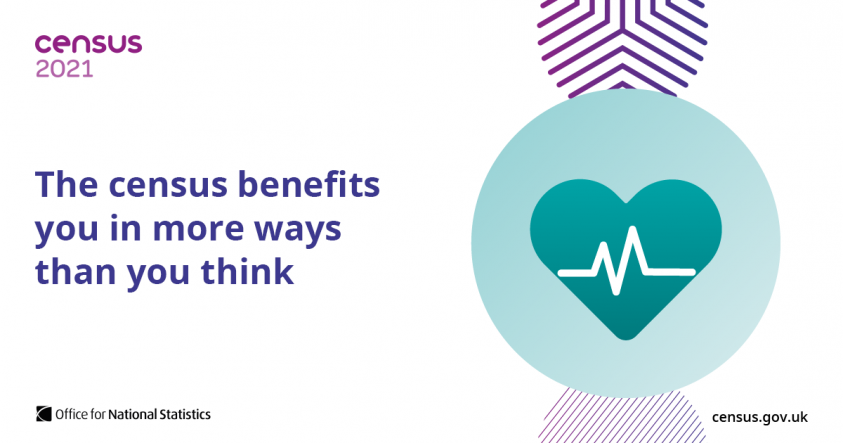New data from the 2021 Census published this week (28 June) have revealed that the borough of Barnet’s population has grown by nearly 35,000 from 356,836 in 2011 to 389,300 in 2021 – an increase of 9.2%.

Census
Barnet’s population is the second largest of London’s borough’s, with Croydon recording the highest number of residents.
The Census data shows the population is split into 188,400 (48.4%) males and 200,900 (51.6%) females.
The population of Barnet has increased the greatest in those aged 75 and over with growth of around 11% (2,700 people), the population aged 20 to 74 has increased by around 10% (24,000 people) while the population aged 0 to 19 has increased by around 7% (6,000 people).
Compared to London, Barnet has a greater proportion of the population in those aged 0-15 and again for those aged 40 and over. The proportion of young working age people aged 20 to 39 living in Barnet is lower than that seen in London.
Cllr Barry Rawlings, Leader of Barnet Council, said:
“Accurate Census data is really important to the residents and businesses of Barnet because it helps determine government funding for our council’s services. We are reviewing the data to understand what impact it will have on service provision across the council, from adults’ social care to children’s services to businesses and environmental services, as well as the impact on our partners such as health.
“The accuracy of the data may have been affected by the Census taking place during the pandemic, and this is a big concern for us as we don’t want Barnet to lose out.
“We will look at how data can help us estimate local population growth over the next few years to ensure that we have prepared and planned to reflect the needs of the changing profile of our residents now and for the future.”
For more information on the Census 2021 and London-wide data, visit: First Census 2021 results show continued population growth in England and Wales - Office for National Statistics (ons.gov.uk).
Ends
Table 1 – Comparison of 2011 and 2021 Census Total Population
Total Population
Table 1 shows the comparison between the 2011 Census and the 2021 Census for Barnet, London and England.
|
Area |
2011 Census |
2021 Census |
Difference (%) |
|
Barnet |
356,386 |
389,300 |
9.2% |
|
London |
8,173,941 |
8,799,800 |
7.6% |
|
England |
53,012,456 |
56,489,800 |
6.6% |
Table 2 – Comparison of 2020 MYE and 2021 Census Total Population
In 2011 Barnet had the second largest population of any Borough in London, the largest being Croydon at 363,378. In 2021
Table 2 shows the comparison between the 2020 Mid-Year Population estimates which is the latest available and the 2021 Census for Barnet, London and England.
|
Area |
2020 Mid-Year Estimate |
2021 Census |
Difference (%) |
|
Barnet |
399,007 |
389,300 |
-2.4% |
|
London |
9,002,488 |
8,799,800 |
-.2.3% |
|
England |
56,550,138 |
56,489,800 |
-0.1% |
Table 3 – Barnet population by Gender
Gender Breakdown
Table 3 shows the breakdown of the population by genders for the 2011 and 2021 census outputs and the 2020 mid-year population estimate.
|
Gender |
2011 Census |
2020 Mid-Year Estimate |
2021 Census |
|
Male |
172,676 (48.5%) |
198,961 (49.9%) |
188,400 (48.4%) |
|
Female |
183,710 (51.5%) |
200,046 (50.1%) |
200,900 (51.6%) |
Table 4 – Barnet Population Breakdown by Broad Age Bands
Age Structure
Table 4 shows the population totals by broad age bands
|
|
Age 0-19 |
Age 20-74 |
Age 75+ |
|
2011 Census |
90,464 |
242,213 |
23,709 |
|
2021 Census |
96,600 |
266,400 |
26,300 |
|
Increase in 2011 |
6.8% |
10.0% |
10.9% |
The population of Barnet has increased the greatest in those aged 75 and over with growth of around 11% (2,700 people), the population aged 20 to 74 has increased by around 10% (24,000 people) while the population aged 0 to 19 has increased by around 7% (6,000 people).
Compared to London, Barnet has a greater proportion of the population in those aged 0-15 and again for those aged 40 and over. The proportion of young working age people aged 20 to 39 the proportion living in Barnet is lower than that seen in London.
